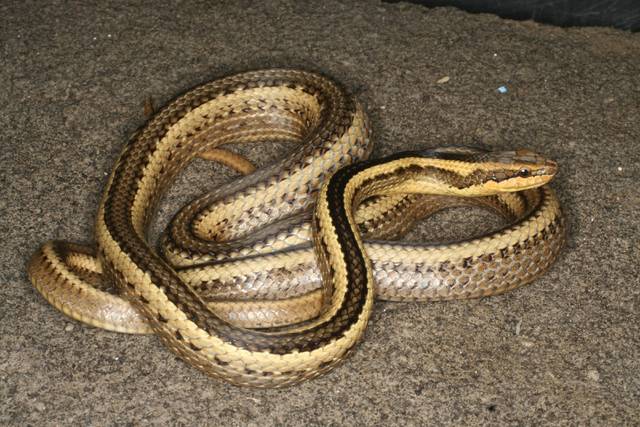NEW ORLEANS — A Louisiana professor is in heady company, honored by having one of three newly identified species of snakes from the Galapagos Islands named after him.
“They named one after Charles Darwin — that’s a no-brainer — and one after the Greek god of fire, and one after me, of all people,” said Robert A. Thomas , an environmental biologist and head of head of the Center for Environmental Communication at Loyola University New Orleans.
The snake in question, a handsome critter with lengthwise brown and creamy yellow stripes, is called Pseudalsophis thomasi (sood-al-SO-fis TOM-uhs-eye).
“I’ve got a picture of it taped up here in the office, and it makes me smile every time I look at it,” Thomas said.
He’s been studying snakes since the 1970s and began studying those in the Galapagos Islands in 1984. In 1997, he published an overview of Galapagos snakes based on features such as scale counts, patterns and other shapes and forms.
A team of Brazilian and Ecuadorian biologists led by Dr. Hussam Zaher of the Universidad de Sao Paolo used genetic analysis to restudy the snakes and work out their evolutionary route through the chain of islands. That study identified the three new species. In addition to Pseudalsophis thomasi, they are Pseudalsophis hephaestus, for the island chain’s volcanic origins; and Pseudalsophis darwini, for the scientist whose theory of evolution grew out of a voyage through the Galapagos.
Their findings were published online Aug. 22 by the journal Systematics and Biodiversity, and on Sept. 3 in the Brazilian journal Pesquisa.
The scientists invited Thomas to join the team five years ago. He shared the information he had collected and got more from U.S. museums. Then the others told him they wanted to name one of the new species after him, to honor his work studying the islands’ snakes.
“I had to drop off the paper. The rules are that you cannot be an author on a paper where something is named after you,” Thomas said. “I thought about it deeply and decided there are just some fun honors you shouldn’t pass up in life. This is one of them.”
Thomas said the species is mildly venomous but not dangerous to people — only to lizards and other small animals. The one used for the species’ formal description was 726 millimeters (about 28.6 inches) long and weighed 105 grams (3.7 ounces).
Thomas said he has photos of the snake that he took in 1984, not knowing it was a different species. They weren’t very good, he said, because the snake was wriggling, but they did let him describe the belly scales and back pattern.
“A friend could have named a bacterium after me from Outer Slobovia and that would have been a real honor. … But this is a snake that I’ve worked on, so it’s very meaningful to me,” he said. “I’m very honored.”


